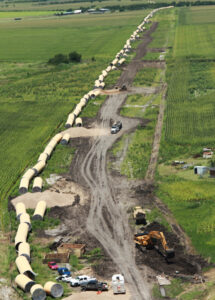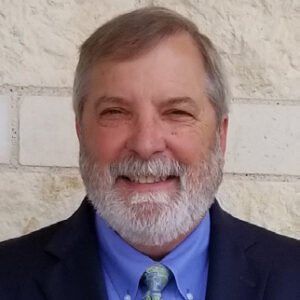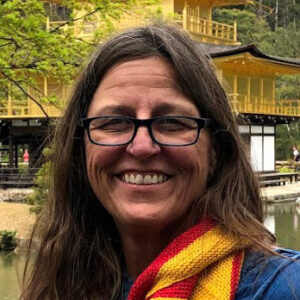For nearly 100 years, the Tarrant Regional Water District (TRWD) has been providing flood-control services along the Fort Worth floodway and water supply services to 11 counties. Dallas Water Utilities (DWU) has been providing water to its service area for over 125 years. Combined, TRWD’s and Dallas’s service populations are in the 5.75–6 million range. Population growth, climate variability, greater distance to sources, bonding capability, debt service, rates, politics, regulations, legislation, and capital and life-cycle costs are all driving state and local agencies to partner and share regional resources and conveyances, and TRWD and DWU are not exceptions. The rapid growth of both agencies’ service areas has necessitated the design and construction of an ambitious new joint pipeline project, the Integrated Pipeline (IPL) project, a raw water supply program that integrates the TRWD and DWU water supplies from Lake Palestine, Cedar Creek Reservoir, and Richland Chambers Reservoir. The IPL will be designed and constructed over the next 20 years, and when operational, will deliver up to 350 million gallons per day (MGD) of water to the TRWD and Dallas service areas. In this interview, IPL Program Manager Ed Weaver and IPL Resident Engineer Shelly Hattan update us on the progress of the project.
Municipal Water Leader: Please tell us about your backgrounds and how you came to be in your current positions.
Ed Weaver: TRWD is the only job I have had since high school. I started out in the welding shop and worked up from there through construction inspection, construction management, pipeline systems operations and maintenance, systems automation, and engineering. At the same time, I went to school at night, earning associate, bachelor’s, and master’s degrees. Presently, I am working on a systems engineering PhD at Colorado State University, focusing on a systems approach to regional water supply planning. I currently serve as the IPL program manager.
Shelly Hattan: I worked my way through school, so I graduated later. I’m a civil engineer, and I ended up coming to work for TRWD straight out of college. I stayed here for about 2½ years before leaving for several years. I had the great opportunity to come back to TRWD just before this project was getting started. During my first week back, about 12 years ago, we started interviewing engineers for the program manager position. I’ve been in the field on this project for the past 6 years. I worked to get information for the designers, and during construction, I worked as a construction manager assistant. I am a certified construction manager and a licensed professional engineer. In addition, I have a master of science degree in water resources from the University of Texas at Arlington.
Municipal Water Leader: Please tell us about TRWD.
Ed Weaver: TRWD provides raw water to our customers, who then treat and distribute the water; Dallas, on the other hand, does raw water transmission, water treatment, and distribution. TRWD has five existing pipeline systems that transport raw water from Cedar Creek and Richland Chambers Reservoirs in East Texas to Arlington, Benbrook, and Eagle Mountain Reservoirs in and around Fort Worth. These pipeline systems were put in service in 1973, 1987, the early 1990s, and the early 2000s, respectively. The new IPL project, which is a joint project between TRWD and the City of Dallas, intends to address the demands on our system that we expect to see in coming years by bringing more water from East Texas. In addition, the district and the city have worked out a water sharing agreement to allow the district to deliver water to Dallas from its current reservoirs to allow for the optimization of energy management. The IPL will connect Cedar Creek and Richland Chambers Reservoirs and will allow TRWD to convey our total permitted water from those two sources. The IPL also includes a connection to Lake Palestine, where the City of Dallas has contracted water rights, to deliver its allotment to its designated water treatment plant. Right now, we are working on phase 3 of the IPL program: the connection from Lake Palestine over to Cedar Creek. That is Dallas’s only source and conveyance portion of the project.
Municipal Water Leader: How has the planning and construction of the IPL progressed?
Ed Weaver: TRWD, the City of Dallas, and North Texas Municipal Water District (NTMWD) have a little over 95 percent of the total water supply and 95 percent of the population in Texas’s planning region C. These three agencies supply water to the population from 15 reservoirs. NTMWD is building a new reservoir as well. In order to promote regional water supply planning, the state encourages these agencies to come together and look at supplies and opportunities for this type of project. DWU and TRWD were ahead of the state by starting negotiations 20 years ago regarding combining Dallas’s Lake Palestine pipeline project with the TRWD third pipeline project as an opportunity for savings for our rate payers. The initial business case analysis showed that combining the projects into a shared pipeline would result in $500 million in capital cost savings and $1 billion of life-cycle cost savings. Based on those results, we negotiated and entered into a contract with Dallas and put the program together in phases.
Shelly Hattan: The most interesting thing for me about the IPL project happened when we first started hiring. We had eight pipeline teams, two pump station teams, and a handful of other different services teams surveying. At the beginning, we thought we had to have everything online by 2018. After TRWD’s study of our demands, however, the concept design team realized that we only needed a portion of water by 2018. The team devised a plan to put sections online on a staggered timeline.
Ed Weaver: After the business case study and before the conceptual design phase, we devised an economic analysis on the savings and justification for a joint project. Because of the magnitude of our past projects, we’ve always managed all our own contracts for expansions. We’ve had consultants do a lot of the design work and manage some of the construction, but we’ve always taken ownership of these programs as an agency.
As Shelly said, we initially thought we had to have everything ready by 2018. As we got into the logistics, we started looking at the short and longer-term demand scenarios related to supply, growth, and conservation. We wanted to have designs up to 60 percent done so that we could start to put together our phased schedule. We came up with a three-phase schedule that would allow us to tie the TRWD demand delivery point east to the Dallas supply point at Lake Palestine by 2027.
The rest of the construction will be demand driven. We have put phases 4 and 5 on hold for now, and when demand picks up, we will respond. There is no point in building and maintaining infrastructure before the need exists. We hired consultants, did preliminary designs for the entire project for permitting purposes, and then did final designs for the sections we needed to build first.
Municipal Water Leader: What is the current status of the construction?
Ed Weaver: Currently, we’ve got roughly 60–65 miles of pipe in the ground. We’ve got one pump station operational, with some interconnects that allow us to tie in to our existing Cedar Creek and Richland Chambers infrastructure. We also have a 450‑million-gallon balancing reservoir that allows us some operational flexibility.
Currently, we’re working on connecting our next supply, which is permitted water in Cedar Creek Reservoir. That will come online this spring if everything holds up.
Dallas has also said it wants the Lake Palestine connection online by 2027. We’re currently working on obtaining financing and putting together plans and specifications for roughly 40 miles of 84‑inch pipe and a lake pump station. We should be done with that by early summer. That project will involve some long tunnels.
In summary, we are working toward the operation of the new Cedar Creek Reservoir pump station during the first and second quarters of 2021 and will ramp up construction of the Dallas-focused phase 3 during the third and fourth quarters.
Shelly Hattan: We already have pipelines from Richland Chambers and Cedar Creek Reservoirs. The first Cedar Creek pipeline was actually not large enough to take advantage of our full water rights. The station we’re building now will allow us to pump our full permitted amount. In addition, the new pump station will have the capacity to deliver the additional capacity for a future project we are planning. This project will involve taking water out of Trinity River, filtering it through wetlands, and returning it to Cedar Creek Reservoir.

Municipal Water Leader: How is the IPL being paid for?
Ed Weaver: Once the IPL is all built out from the original study, it’s expected to cost $2.3 billion. We issued bonds in 2‑year increments so that the debt service will not hit all at once and spike rates. The bonds generally have 30‑year terms, and the debt service payments will slowly ramp up and then ramp down at the end of the terms. We also executed these projects with our current staffing levels so that we were able to hire a minimal number of people. By using consultants to augment our staff, TRWD avoids the need to lay off people at the end of the project. That has worked out well on the management side.
Municipal Water Leader: Tell us about the JCC1 pump station on the IPL.
Shelly Hattan: The JCC1 lake pump station is located 55 miles southeast of Dallas on Cedar Creek Reservoir. It is one of three pump stations that will be part of the completed IPL. It’s taken 4 years to build. First, we constructed the wet well and the intake structure, which took about 2 years. For the past 2 years, we’ve been working on the pumps in the upper structure. It is expected to be completed in April.
Municipal Water Leader: The JCC1 pump station has variable frequency drives (VFDs) on all its vertical turbine pumps. How does this feature help respond to energy costs?
Ed Weaver: Energy is our biggest cost driver when it comes to delivering water. We budget around $20 million a year just for pumping power. We take supply voltage at 4,160 volts, coming off 138‑kilovolt transmission lines. Because of the size of the pump units, an electric distribution system can’t reliably serve our loads. The pumping units at JCC1 are each 3,500 horsepower. The total amount of water that JCC1 will be able to move is 277 MGD. Our existing Cedar Creek pump station can only produce a maximum of around 137 MGD.
In the old days, most pumps operated at a constant speed. It’s hard to hit a demand with constant-speed pumps. It requires you to set your demand high, regardless of whether you run the pumps for 15 minutes or 15 months, and to pay the same demand charge. That charge is for the highest kilowatt demand set during a given billing cycle within either the annual on-peak or off-peak tariff period. This can be a lot of money. Then you regulate the flow by throttling valves, which is inefficient from a power point of view.
VFDs allows us to dial in the correct current or voltage (depending on the type of drive) while reducing the current draw on the electric grid so that we draw and pay for only what we need instead of setting a high demand and pinching flow back with a valve. I compare VFDs to dimmer switches on a light fixture, which allow you to adjust your light to a desired level instead of having it at full brightness all the time.
The VFDs allow us to control the flow more efficiently and effectively than we could by putting actuators on valves and throttling them. The VFDs also have a soft start feature. Soft starts and drives are easier on the equipment. Finally, the VFDs have allowed us to start using SCADA and unmanned operations, which frees up operators to work in a lot of different places instead of manning the pump stations 7 days a week on rotating shifts.
Shelly Hattan: We have tools that monitor how much energy is going to cost and that warn our operations staff at least 15 minutes before rates spike. That allows our operators to slow pumps down during times of high energy cost so that we use less energy. One strategy is to pump at lower rates during the day, when everyone is using their air conditioning units, and then speed up the pumps at night, when rates are cheaper. That’s something we’re working through, and the VFDs give our energy-management staff the ability to do that.
Municipal Water Leader: What is the advantage of the tee screens on the intake structure at JCC1 being able to be moved to different elevations?

Ed Weaver: In order to get permits from the Texas Commission on Environmental Quality and the U.S. Army Corps of Engineers, we had to ensure that we were protecting wildlife. The screens we have on our existing stations were installed before a lot of updated and new state and federal regulations came into play. Among other things, those state and federal regulations restrict the velocity of water in the intake to a certain speed so that they don’t harm fish and wildlife. We also need to have screens with openings small enough to prevent fish from being pulled into the pump. The tee screens are there to meet those environmental requirements. They are about 7 feet in diameter and 15 or 16 feet long. The screens rotate and have brushes that prevent vegetation from clogging them and starving out the pumps. Tee screens or pump intake screens have been around for a long time, especially in the Northwest. They are adjustable for water quality reasons and head reasons. We can move them up and down based on changes in water level. The best water quality allows us to take care of some of those issues for the treatment plants by being able to vary the elevation of the intake.
Shelly Hattan: Our lakes are fairly shallow, and as such, we have varying water qualities by depth based on water temperature and time of year. Our water treatment plants don’t like the water from the bottom of the lakes because the oxygen is low and there are a lot of water quality issues, such as high levels of manganese and iron.
Municipal Water Leader: What did TWRD learn from this project, and what will it bring forward to other elements of the IPL?
Ed Weaver: One of our missions going into this was to keep in mind the triple bottom line of social, environmental, and economic aspects of the project. We took that concept to heart, knowing that it was going to add some cost, but that in the grand scheme of things, it was the right thing to do.
The IPL was the first pipeline ever awarded the Platinum Award by the Sustainable Infrastructure Institute. Instead of spoiling all the materials that came out of excavation, we tried to find opportunities to use them. The clay material excavated from the pipeline was suitable to use to build the clay core for the balancing reservoir of a project we call the Midlothian Balancing Reservoir. The granular material coming from the balancing reservoir site, in turn, was used for backfill for the pipe.
We have goals related to diverse business participation. We have a goal of 25 percent for professional services and construction contracts. It’s been easier with professional services than with construction services because of the size and scale of some of these projects, but we’re averaging about 22 percent on professional services and construction contracts.
The research we did in preparing for this project has also provided us with lessons that we will bring forward to future projects. We did a lot of research on coatings for the pipe and on backfill methodologies that we have made available to the industry as a whole. We did university studies and consultant studies. Some of the results were resisted by some manufacturers and contractors because they strengthened our specifications in a number of areas, in turn affecting fabrication, storage, handling, and installation methods. For the most part, businesses, including pipe manufacturers and coating manufacturers, have since come around. Our results are now finding their way into some industry standards.
Shelly Hattan: I’m proud of the research that we did, even though we were disappointed with some of the results. For instance, we did a lot of research on in-situ-controlled, low-strength backfill. It didn’t really pay off in the areas where we had clay, but it may be beneficial in the next phase, where we have a lot of sand. It was interesting and eye opening to do a study and see results that were different from what our consultants came up with. The research on pipe coatings got down to the microscopic level, which gave us confidence in our choice of materials and methodology.
Ed Weaver: Our coating research also affected how we contracted and how the coordination between pipe manufacturer coating and delivery worked, which really gave contractors some flexibility. We added 10 or 12 mils to the industry-standard minimum polyurethane thickness to give it a sacrificial layer so that even when the pipe is staged above the ground, the minimum thickness will be guaranteed when it is finally installed. During the summer months, the coatings will chalk and lose thickness integrity, which can otherwise be a problem. Coating thickness is important for the longevity of the buried pipe.
Ed Weaver is the program manager for the Integrated Pipeline project. He can be contacted at eddie.weaver@trwd.com.

Shelly Hattan is the resident engineer for the Integrated Pipeline project. She can be contacted at shelly.hattan@trwd.com.

